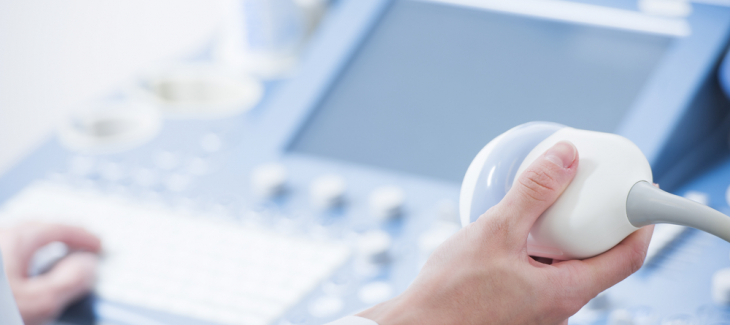- General
- Telehealth
- Career Trends
- Featured
- Legal
- News and Events
- Technology
- How To
- Procedures
- Training
- Allied Health Industry
- Allied Health Practitioners
- Employer News
- Candidate News
Recent Posts
Most Popular
New Ultrasound Technology Could Slash the Cost of Machines to $100

Engineers at the University of British Columbia have created a new ultrasound probe that could dramatically reduce the cost of ultrasound scanners. The innovation is portable, wearable, and can be powered by a smartphone.
The patent-pending device could lower the cost of ultrasound scanners, which usually cost from $25,000 to $75,000, to as little as $100.
Developers manufactured devices they call polymer capacitive micro machined ultrasound transducers, which are tiny vibrating drums made from polymer resin. The polyCMUTs are cheaper to build than the piezoelectric crystals which ultrasound scanners usually use to create images.
Researchers also report that the CMUTs offer broader bandwidth and better integration with electronics.
In the past, the transducers were made of rigid silicone which requires expensive, environment-controlled manufacturing systems. The new drum requires fewer steps and less equipment.
Ultrasound machines create sonograms by creating images of the inside of the body and sending them to computers.
Ultrasound machines send vibrations, or sound waves, into the body until they hit a boundary and bounce back. The transducers convert the returning sound waves into electrical currents which can be processed into images. The result is a real-time view of internal soft tissues and organs.
The new ultrasound machines produced images that were as clear as their predecessors, and because they can operate on only 10 volts, they are suitable for use in remote or limited-power areas.
Additionally, because the new transducer can be built into more flexible materials, the scanners can be wrapped around the body for more detailed views and easier scanning.
Perhaps most importantly, ultrasound machines have typically been clunky and large, in addition to being prohibitively expensive.
Developers admit that there are limitations to the innovation as it exists now, mainly that they offer limited tissue penetration depth and a susceptibility to acoustic interference.
Based on the number of images generated annually, ultrasound imaging is the most widely used medical imaging process in the world. The ultrasound market is forecasted to grow from $4.6 billion in 2012 to almost $7 billion in 2019.
Other developments in the ultrasound industry include a $2,000 device that displays ultrasound images on an iPhone.
Early prototypes of the transducers took six months to develop and involved a Silicon Valley fabricator. When researchers brought the fabrication in-house, they were able to design, build, and test each new design in one day using green technology.
Developers expect the technology to offer a wide range of uses in the near future, such as continuous monitoring of the heart and images of the inside of arteries and veins.
The next step in the project is the development of a variety of prototypes and then testing in clinical applications.








Comments